Back to products
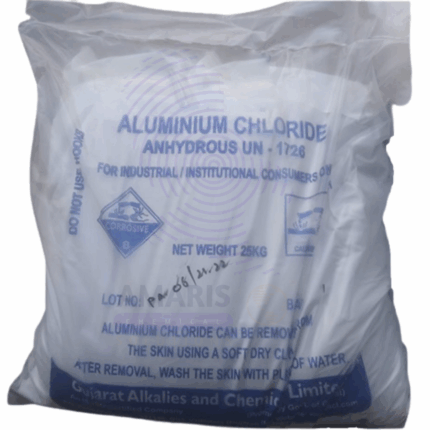

Anhydrous Aluminum Chloride
$ 7.75 Original price was: $ 7.75.$ 7.63Current price is: $ 7.63.
Amylase Baking Enzyme
$ 4.11 Original price was: $ 4.11.$ 4.02Current price is: $ 4.02.
Whatsapp Order
Amylase Baking Enzyme is a class of enzymes that catalyzes the hydrolysis of starch into sugars such as maltose and glucose. In the baking industry, amylases are widely used to improve dough handling, enhance fermentation, increase loaf volume, improve crumb softness, and extend shelf life. The enzyme is typically derived from microbial (fungal or bacterial) sources like Aspergillus oryzae or Bacillus subtilis. Commercial baking amylase products may include α-amylase, β-amylase, and glucoamylase, depending on application needs.
Categories: Dough Conditioners, Enzymes
Tags: Alpha-amylase, Amylase baking enzyme, Bakery Ingredient, Baking Enzyme, Food processing enzyme
Description
Table of Contents
Toggle
Amylase Baking Enzyme
Primary Uses
- Food & Beverage Industry – Baking
- Bread Making:
- Breaks down starch into fermentable sugars, providing food for yeast and enhancing fermentation.
- Improves oven spring and loaf volume.
- Enhances crust color through Maillard reaction by increasing reducing sugars.
- Improves crumb structure and softness.
- Pastries, Rolls, and Cakes:
- Improves dough extensibility and reduces mixing time.
- Enhances crumb texture, softness, and shelf life.
- Frozen Dough Products:
- Maintains yeast activity and sugar levels in frozen or retarded dough systems.
- Prevents sugar loss during freeze-thaw cycles.
- Flour Treatment:
- Added directly to flour in mills to standardize baking performance.
- Compensates for seasonal variations in flour starch content.
- Industrial Enzyme Applications
- Beer Brewing (α- and β-amylase):
- Helps convert starches in malt to fermentable sugars during mashing.
- Improves alcohol yield and consistency in brewing.
- Malt Extract Production:
- Used to break down starches in malted barley for food ingredients and brewing.
Secondary Uses
- Animal Feed Additive
- Added to animal feed to improve starch digestibility in livestock and poultry, enhancing nutrient absorption and feed efficiency.
- Textile Industry
- Used in desizing of cotton fabrics by breaking down starch-based sizing agents, allowing easier removal during washing.
- Paper & Pulp Industry
- Applied to reduce viscosity of starch in paper coatings and improve paper strength and printability.
- Detergent Industry
- Some specialty detergents include amylase to remove starch-based stains from fabrics and kitchenware.
- Bioethanol Production
- Amylase is used to hydrolyze starch in feedstocks like corn or cassava into fermentable sugars prior to fermentation.
- Pharmaceutical & Diagnostic
- Used in some diagnostic kits for starch digestion and enzyme activity measurement.
- Wastewater Treatment
- Helps in degrading starch-based organic materials in effluent systems, improving biodegradability.
Additional information
| PACK SIZE |
25kg |
|---|
KEY PRODUCT FEATURES
1. Basic Identification Attributes
- IUPAC Name: α-1,4-glucan-4-glucanohydrolase (for α-amylase)
- Common/Trade Names: Amylase, Fungal α-Amylase, Bacterial α-Amylase, Glucoamylase
- CAS Numbers:
- α-Amylase (from Aspergillus oryzae): 9000-90-2
- Bacterial α-Amylase (from Bacillus subtilis): 9000-92-4
- Glucoamylase: 9032-08-0
- HS Code: 3507.90.00 (Enzymes for industrial use)
- Synonyms: Diastase, Liquefying Amylase, Saccharogenic Enzyme
2. Physical & Chemical Properties
- Appearance: Free-flowing powder, granules, or liquid (brownish or light tan)
- Odor: Mild fermentation odor
- Solubility: Soluble in water, insoluble in organic solvents
- Activity: Varies – usually specified in SKB, DU, or FAU units
- pH Range of Activity: Typically 4.5–7.5 (depends on enzyme type)
- Optimum Temperature:
- Fungal α-amylase: 45–60°C
- Bacterial α-amylase: 60–85°C
- Thermal Stability: Some forms are heat-stable for baking applications
3. Safety & Hazard Attributes
- GHS Classification:
- Not hazardous in diluted or properly formulated forms
- May cause allergic respiratory reactions in sensitive individuals
- NFPA Ratings:
- Health: 1
- Flammability: 0
- Reactivity: 0
- Toxicity:
- Non-toxic at use levels in food
- Inhalation of enzyme dust may cause sensitization
- Incompatibilities: Strong acids or oxidizers (may denature enzyme)
4. Storage & Handling Attributes
- Storage Conditions:
- Store in original container, tightly closed, in a cool (≤25°C), dry place
- Avoid exposure to moisture and direct sunlight
- Shelf Life:
- Powder: 12–24 months
- Liquid: 6–12 months (refrigerated preferred)
- Packaging:
- Food-grade bags, fiber drums, IBCs, jerry cans (for liquids)
- Handling Notes:
- Avoid dust formation
- Ensure proper air handling in enclosed environments
5. Regulatory & Compliance Attributes
- FDA (USA): GRAS (Generally Recognized As Safe) when derived from approved microbial strains
- EU EFSA: Approved as a processing aid or food additive under specific conditions
- FAO/WHO JECFA: Acceptable enzyme preparations from specified sources
- Labeling: May require declaration as a processing aid or enzyme preparation
- Allergen Statement: Required in some jurisdictions due to sensitization potential
6. Environmental & Health Impact
- Ecotoxicity:
- Generally considered safe to aquatic life in diluted effluent
- Biodegradability:
- Rapidly biodegradable under normal wastewater treatment conditions
- Bioaccumulation:
- No potential
- Occupational Exposure:
- Risk of respiratory sensitization in enzyme production or bulk handling
- Minimal risk to consumers in end products
- Carcinogenicity/Mutagenicity:
- Not classified as carcinogenic or mutagenic
SAFETY HANDLING PRECAUTIONS
Safety Handling Precautions
- PPE:
- Wear gloves, goggles, and dust masks when handling powdered enzymes
- Avoid:
- Dust inhalation, ingestion, or skin/eye contact
- Hygiene:
- Wash hands and exposed skin after handling
- Do not eat or drink in the handling area
First Aid Measures
- Inhalation:
- Move to fresh air. Seek medical help if allergic reaction or difficulty breathing occurs
- Skin Contact:
- Wash thoroughly with soap and water
- Eye Contact:
- Rinse immediately with plenty of water for at least 15 minutes
- Ingestion:
- Rinse mouth, drink water. Seek medical advice if symptoms persist
Firefighting Measures
- Flammability:
- Non-flammable, but dust may pose a combustible dust hazard in rare conditions
- Extinguishing Media:
- Water spray, CO₂, foam, or dry powder
- Special Hazards:
- If heated to decomposition, may emit carbon oxides
- Firefighter Protection:
- Use self-contained breathing apparatus (SCBA) in case of large fires
Related products
Bakery Salt
$ 1.11
Bakery salt is a finely ground, food-grade salt specifically processed for use in baking and food preparation. It is characterized by its purity, consistent grain size, and minimal additives to ensure it blends evenly in doughs and batters. Bakery salt enhances flavor, improves dough texture, controls yeast fermentation, and extends the shelf life of baked goods. Due to its fine granules, it dissolves quickly and evenly, making it ideal for commercial and home baking applications.
Bating Agent
Bating Agent is a biochemical preparation used primarily in the leather processing industry during the bating stage, which follows liming and deliming. It consists mainly of proteolytic enzymes (such as pancreatin, trypsin, or subtilisin) that break down non-collagenous proteins, hair residues, and unwanted tissue from hides and skins. This enzymatic treatment softens the leather, improves its texture and pliability, and prepares it for tanning. The bating process enhances the quality, uniformity, and appearance of the final leather product.
Caramel Powder Flavor
Caramel Powder Flavor is a highly concentrated powdered flavoring agent designed to impart the rich, sweet, and buttery aroma and taste of caramel to a wide range of products. Produced through controlled caramelization of sugars and natural extracts, this flavor powder delivers authentic caramel notes without artificial additives. Its fine powder form ensures easy blending, precise dosing, and extended shelf life. Commonly used in food and beverage manufacturing, it enhances sensory appeal in bakery products, confectionery, dairy items, and beverages. Its versatility also makes it suitable for flavoring applications in personal care and cleaning products.
Icing Sugar Super refined
Icing Sugar Super refined, also known as powdered sugar or confectioners' sugar, is a finely ground white sugar produced by milling granulated sugar into a smooth, powdery form. This grade of icing sugar has an ultra-fine texture with a particle size typically less than 50 microns, ensuring quick solubility and a smooth finish. It often contains a small percentage of anti-caking agent such as cornstarch or tricalcium phosphate to prevent clumping. Super refined icing sugar is widely used in baking, confectionery, and food processing industries for its fast-dissolving and smooth blending characteristics.
Malt Extract
Malt Extract is a concentrated syrup or powder derived from malted barley or other cereal grains through enzymatic extraction. It is produced by steeping, germinating, and drying grains, then mashing and concentrating the liquid extract. Rich in sugars (mainly maltose), amino acids, vitamins (notably B-complex), and minerals, malt extract is valued for its natural sweetness, nutritional content, and fermentable properties. Available in liquid (syrup) or dry (powdered) forms, it is widely used in the food, beverage, pharmaceutical, and animal nutrition industries.
Milk Butter Liquid Flavour
Milk Butter Liquid Flavour is a rich and creamy flavoring agent designed to replicate the smooth, savory taste of fresh milk and real butter. This food-grade flavor is widely used in the food and beverage industry to impart a full-bodied dairy profile, adding indulgent and comforting notes to various products. Its excellent solubility, thermal stability, and compatibility with both sweet and savory formulations make it an ideal ingredient in bakery goods, confectionery, dairy-based products, and sauces. It enhances overall flavor depth and mouthfeel in both processed and gourmet food items.
Orange Concentrate Liquid Flavour
Orange Concentrate Liquid Flavour is a highly concentrated, food-grade flavoring agent designed to deliver the fresh, tangy, and sweet citrus profile of ripe oranges. This liquid flavor is widely used in food and beverage manufacturing due to its vibrant taste, excellent solubility, and ability to retain flavor integrity even under heat or processing stress. It is ideal for applications ranging from beverages, confectionery, and baked goods to dairy and dessert products. Its intense citrus character enhances both natural and artificially flavored food formulations.
Sunflower Butter
Sunflower Butter is a creamy spread made from roasted sunflower seeds, offering a nutritious and allergen-friendly alternative to traditional nut butters. It is rich in healthy fats, protein, vitamins, and minerals, making it a popular choice for health-conscious consumers. Sunflower Butter has a mild, slightly nutty flavor and smooth texture, suitable for direct consumption or incorporation into various food products.

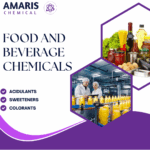
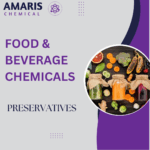 Preservatives(food)
Preservatives(food)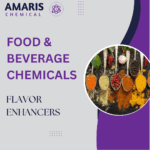 Flavor Enhancers
Flavor Enhancers Acidulants
Acidulants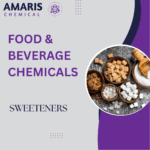 Sweeteners
Sweeteners Antioxidants
Antioxidants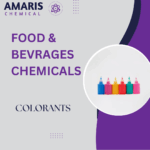 Colorants(food)
Colorants(food) Nutraceutical Ingredients (food)
Nutraceutical Ingredients (food) Nutrient Supplements
Nutrient Supplements Emulsifiers
Emulsifiers
 Collectors
Collectors Dust Suppressants
Dust Suppressants Explosives and Blasting Agents
Explosives and Blasting Agents Flocculants and Coagulants
Flocculants and Coagulants Frothers
Frothers Leaching Agents
Leaching Agents pH Modifiers
pH Modifiers Precious Metal Extraction Agents
Precious Metal Extraction Agents
 Antioxidants(plastic)
Antioxidants(plastic) Colorants (Pigments, Dyes)
Colorants (Pigments, Dyes) Fillers and Reinforcements
Fillers and Reinforcements Flame Retardants
Flame Retardants Monomers
Monomers Plasticizers
Plasticizers Polymerization Initiators
Polymerization Initiators Stabilizers (UV, Heat)
Stabilizers (UV, Heat)
 Antifoaming Agents
Antifoaming Agents Chelating Agents
Chelating Agents Coagulants and Flocculants
Coagulants and Flocculants Corrosion Inhibitors
Corrosion Inhibitors Disinfectants and Biocides
Disinfectants and Biocides Oxidizing Agents
Oxidizing Agents pH Adjusters
pH Adjusters Scale Inhibitors( water)
Scale Inhibitors( water)
 Antioxidants(cosmetic)
Antioxidants(cosmetic) Emollients
Emollients Fragrances and Essential Oils
Fragrances and Essential Oils Humectants
Humectants Preservatives
Preservatives Surfactants(cosmetic)
Surfactants(cosmetic) Thickeners
Thickeners UV Filters
UV Filters
 Fertilizers
Fertilizers Soil Conditioners
Soil Conditioners Plant Growth Regulators
Plant Growth Regulators Animal Feed Additives
Animal Feed Additives Biostimulants
Biostimulants Pesticides (Herbicides, Insecticides, Fungicides)
Pesticides (Herbicides, Insecticides, Fungicides)
 Active Pharmaceutical Ingredients (APIs)
Active Pharmaceutical Ingredients (APIs) Excipients
Excipients Solvents(pharmaceutical)
Solvents(pharmaceutical) Antibiotics
Antibiotics Antiseptics and Disinfectants
Antiseptics and Disinfectants Vaccine Adjuvants
Vaccine Adjuvants Nutraceutical Ingredients (pharmaceutical)
Nutraceutical Ingredients (pharmaceutical) Analgesics & Antipyretics
Analgesics & Antipyretics
 Analytical Reagents
Analytical Reagents Solvents(lab)
Solvents(lab) Chromatography Chemicals
Chromatography Chemicals Spectroscopy Reagents
Spectroscopy Reagents microbiology-and-cell-culture-reagents
microbiology-and-cell-culture-reagents Molecular Biology Reagents
Molecular Biology Reagents Biochemical Reagents
Biochemical Reagents Inorganic and Organic Standards
Inorganic and Organic Standards Laboratory Safety Chemicals
Laboratory Safety Chemicals Specialty Laboratory Chemicals(Special Laboratory Equipment)
Specialty Laboratory Chemicals(Special Laboratory Equipment)
 Demulsifiers
Demulsifiers Hydraulic Fracturing Fluids
Hydraulic Fracturing Fluids Scale Inhibitors(oil)
Scale Inhibitors(oil) Surfactants(oil)
Surfactants(oil) Drilling Fluids
Drilling Fluids
 Dyes and Pigments
Dyes and Pigments Bleaching Agents
Bleaching Agents Softening Agents
Softening Agents Finishing Agents
Finishing Agents Antistatic Agents
Antistatic Agents
 Admixtures
Admixtures Waterproofing Agents
Waterproofing Agents Sealants and Adhesives
Sealants and Adhesives Curing Compounds
Curing Compounds Concrete Repair Chemicals
Concrete Repair Chemicals Anti-Corrosion Coatings
Anti-Corrosion Coatings
 Surfactants(cleaning)
Surfactants(cleaning) Builders
Builders Enzymes
Enzymes Solvents (Cleaning)
Solvents (Cleaning) Fragrances
Fragrances
 Electronic Chemicals
Electronic Chemicals Catalysts
Catalysts Lubricants
Lubricants Photographic Chemicals
Photographic Chemicals Refrigerants
Refrigerants Automotive chemicals
Automotive chemicals Pyrotechnic Chemicals
Pyrotechnic Chemicals
 Biodegradable Surfactants
Biodegradable Surfactants Bio-based Solvents
Bio-based Solvents Renewable Polymers
Renewable Polymers Carbon Capture Chemicals
Carbon Capture Chemicals Wastewater Treatment Chemicals
Wastewater Treatment Chemicals
 Pigments
Pigments Solvents(paint)
Solvents(paint) Specialty Coatings
Specialty Coatings Binders/Resins
Binders/Resins Additives
Additives Driers
Driers Anti-Corrosion Agents
Anti-Corrosion Agents Functional Coatings
Functional Coatings Application-Specific Coatings
Application-Specific Coatings
 Fresh Herbs
Fresh Herbs Ground Spices
Ground Spices Whole Spices
Whole Spices Spice Blends
Spice Blends Dried Herbs
Dried Herbs
 Leavening Agents
Leavening Agents Dough Conditioners
Dough Conditioners Flour Treatments
Flour Treatments Fat Replacers
Fat Replacers Decoratives
Decoratives Preservatives(baking)
Preservatives(baking)
 Plasticizers & Softeners
Plasticizers & Softeners Reinforcing Agents
Reinforcing Agents Adhesion Promoters
Adhesion Promoters Vulcanizing Agents
Vulcanizing Agents Antidegradants
Antidegradants Blowing Agents
Blowing Agents Fillers & Extenders
Fillers & Extenders Accelerators & Retarders
Accelerators & Retarders























